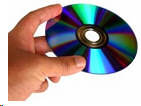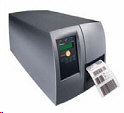UMD - RFID-DTS
RFID Document Tracking System
 |
The UMD Radio Frequency Identification (RFID) Document Tracking System (UMD RFID-DTS) provides a stand alone system to find, requisition, transfer and stock-take documents with RFID tags attached. Though the system can operate stand alone, application program interfaces (API’s) can be custom written to integrate to a client’s Document Management System. UMD RFID-DTS is a web based application that typically resides on existing User IT servers. Being web based, deployment is greatly simplified as operators only need to use a simple browser interface. |
| Features include:
Client software, which resides on the mobile hand held RFID reader, receives instructions from the host system via a wireless LAN, and has the following modes of operation:
RFID Desktop Pad Readers are designed to be attached to local PC’s (via USB ports) and are used to perform the following tasks:
There are two general types of RFID tags that are used to attach on documents:
All transactions are recorded in the history reports of the Host system. Thus, via a simple browser interface, operators can generate history reports by Document, Location or User UMD-RFID-DTS customisation usually involves developing custom application program interfaces (API) to interface to Document Management Systems and any special reporting When Hand Held RFID Readers are used, wireless LAN infrastracture is required | |
| Components The UMD RFID Document Tracking System is made up of the following components: | |
 | UHF Tags are placed on each document folder or satchel.
|
| | |
 | UMD RFID-DTS – Host Supplied as either Software only or Appliance preloaded on PC
|
| | |
 | Optional printer and RFID encoder when RFID Label Tags used:
|
| | |
 | Hand Held RFID & Barcode Reader Mobile RFID and Barcode Reader with wireless communications (IEE802.11)
|
| | |
 | UMD RFID-DTS Client Software Client software that resides on the Hand Held RFID & Barcode Reader |
| | |
 | UMD Model 652 RFID Desktop Pad Reader
|

